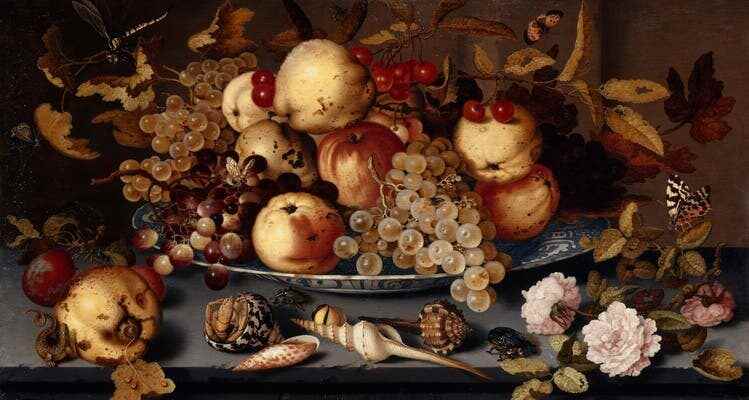From the Neolithic ax to the painted fruit basket to Duchamp’s bottle stand: this greatly expanded view of the still life genre is worth a trip to Paris.
Still Life with Fruit by Balthasar van der Ast (1593/1594–1657).
Wine glass and cut lemon, banquet table with lobster, silver jug and Roman, flower vase in a window niche, skull and extinguished candles: still lifes are fascinating, be it through the refined painting or as symbols for religious or moral messages, for the transience of the earthly or their status Owner. They are also a classic genre of art history.
Under the title «Les Choses. Une histoire de la nature morte», the Louvre is currently showing an ambitious exhibition richly laden with artefacts, into which «things» are integrated that are intended to contribute to a re-evaluation of still life, supported by literature and poetry, philosophy, archaeology, botany or ecology . In order to visualize this expansion, numerous works were consulted. Paintings, sculptures, photographs, videos, films and installations invite you on a world tour through different cultures from antiquity to the present day.
The term “still life” first appeared around the middle of the 17th century, much later than many of the relevant works. In the hierarchy of genres, still life, which deals with inanimate but not inanimate nature, was at the bottom, while history was at the top, ahead of portrait, genre, and landscape. As late as the 19th century, August Wilhelm Schlegel still considered the still life to be a “minor genre”.
Diderot’s remark that Jean Siméon Chardin’s “natures mortes” could effortlessly hold their own alongside history painting proved that the academic canon only corresponded to a limited extent to artistic experience and mastery. And Caravaggio is said to have said three centuries earlier that it is just as difficult to paint a good painting with fruit as one with human figures. Or Max Liebermann: “A well-painted turnip is more valuable than a badly painted Madonna.”
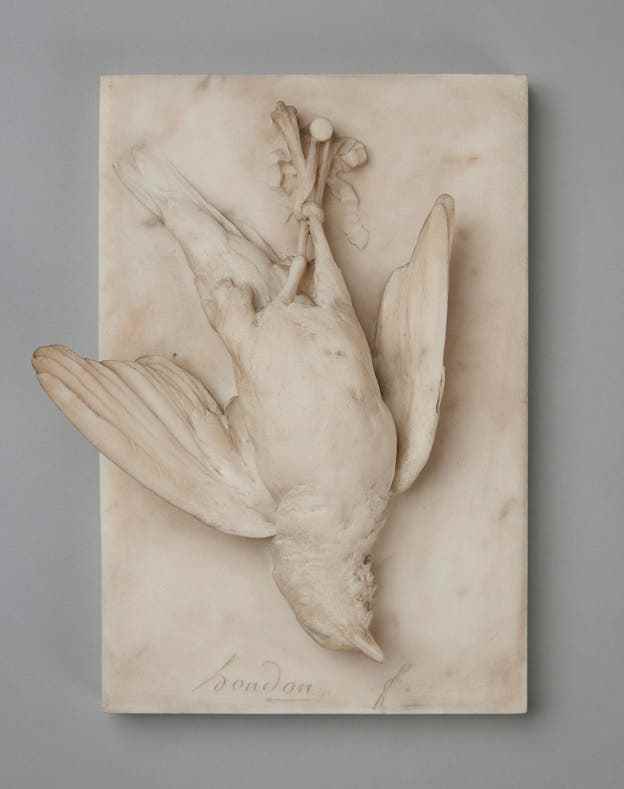
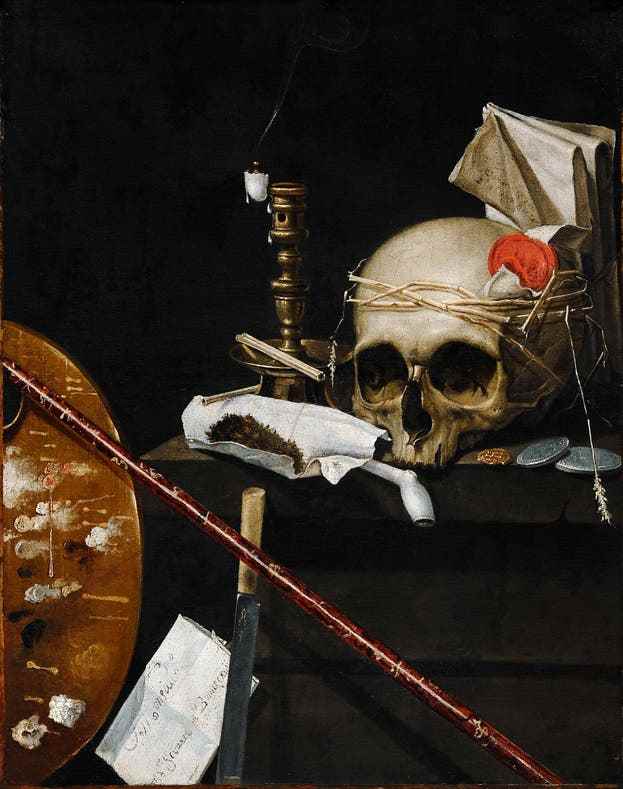
Jean-Antoine Houdon: “Dead Thrush”, 1782; Sebastien Bonnecroy, «Vanitas», 1641.
sensitivity to things
In the last few decades, exhibitions and publications have analyzed and interpreted the genre of the still life in its many forms, its levels of meaning and its historical development up to the present day.
Curator Laurence Bertrand Dorléac now subsumes things in the Louvre under the term “collected objects”, which significantly expands the spectrum of the still life genre. “This is more about a sensitivity to things and works than a historical demonstration,” says Bertrand Dorléac. The presentation of their concept is reminiscent of the cabinets of rarities and cabinets of curiosities of the late Renaissance and Baroque – collections that attempted to capture the entire knowledge of their time, that understood natural objects and art objects as a reflection of the universe. Still life painters may also have been inspired by the treasures of such collections.
Especially for this exhibition, Cameroonian artist Barthélémy Toguo created a towering installation using bundles of fabric left behind by refugees who died on their journey. The work, entitled The Pillar of Missing Migrants, almost reaches the top of the Louvre’s glass pyramid. A clip from the film drama “Zabriskie Point” by Michelangelo Antonioni, which can be seen on two large screens, is another way of entering the extraordinary show. In slow motion, shots of consumer goods set the mood for the exhibition course.
And diversity is celebrated everywhere, be it with a burlesque sequence by Buster Keaton, objects by Christian Boltanski, an Egyptian funerary stele or a version of Georges de la Tour’s series of images of the thoughtful “Magdalene by Candlelight”. The path then leads from Pompeian mosaics and wall paintings to Chardin’s masterpiece «Pfeifen und Krug» and Marcel Duchamp’s iconic «Bottle Stand» to the works of the American photographer Nan Goldin and the Australian sculptor Ron Mueck, but also to Picasso, Miró and Meret Oppenheim.
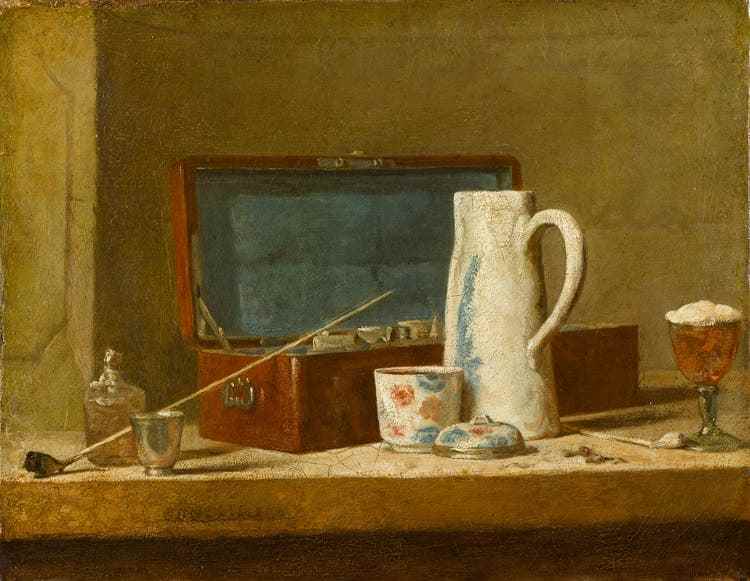
Jean-Baptiste Chardin: «Pipe and drinking vessels», around 1760-63.
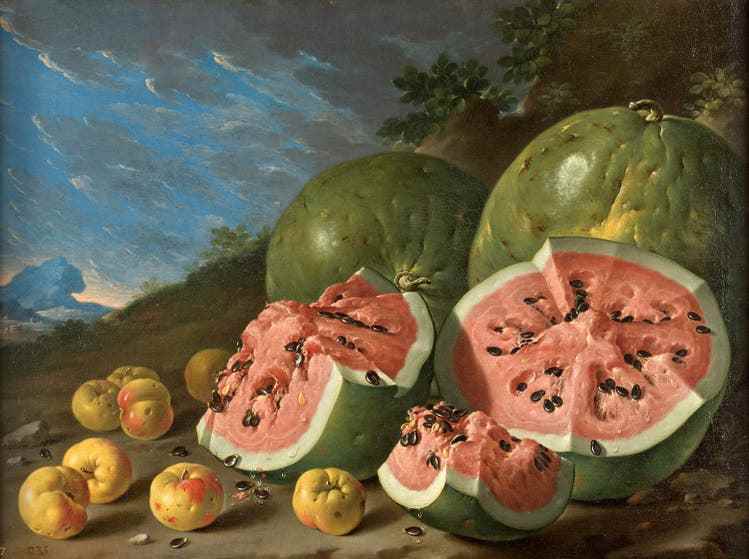
Luis Egidio Meléndez: “Still Life with Watermelon and Apples in a Landscape”, 1771.
Again and again one encounters surprising highlights such as Louis Léopold Boilly’s virtuoso trompe l’oeil, which shows objects of everyday life on the tray of an Empire pedestal table: coins, a quill pen, playing cards, a magnifying glass, two nails, a pocket knife. The illusion is so perfect that one is tempted to touch things. Also fascinating are comparisons such as that of Rembrandt’s “Slaughtered Ox” and Géricault’s “Severed Arms and Legs” or the dialogue between Davidsz de Heem’s “Fruit Still Life” from 1640 and its paraphrase by Henri Matisse.
An aesthetic experience
The Paris show asks about our “relationship to the living and non-living”, to everything that surrounds us. She tries to reflect issues of modern society, consumption, economy, ecological challenges, animal rights. There, objects of faith are discussed or questions about the accumulation of wealth, about barter, the market, plundering. However, certain constants such as the vanitas remain committed to the genre tradition.
Surprisingly, while contemporary artists are prominently represented, there are only a few from earlier centuries. Clara Peeters, Louise Moillon and Anne Vallayer-Coster are the exceptions. May the current state of research, may well-formulated academic reflections determine the exhibition concept: Basically, it is simply about an extended, lively view of “quiet life”.
Approaching a subject like “Les Choses” with the complexity celebrated in Paris is rather unusual for the Louvre as a renowned institution that is characterized by a traditional exhibition program. The reactions are also controversial: for some, the show is a key experience, a conceptual stroke of genius, for others a presentation of exquisite objects that speak for themselves. Either way, the exhibition conveys a varied panorama of masterpieces, an aesthetic and connoisseur’s experience that alone is worth the trip to Paris.
Les Choses. A histoire de la nature morte. Louvre, Paris. Until January 23, 2023.
